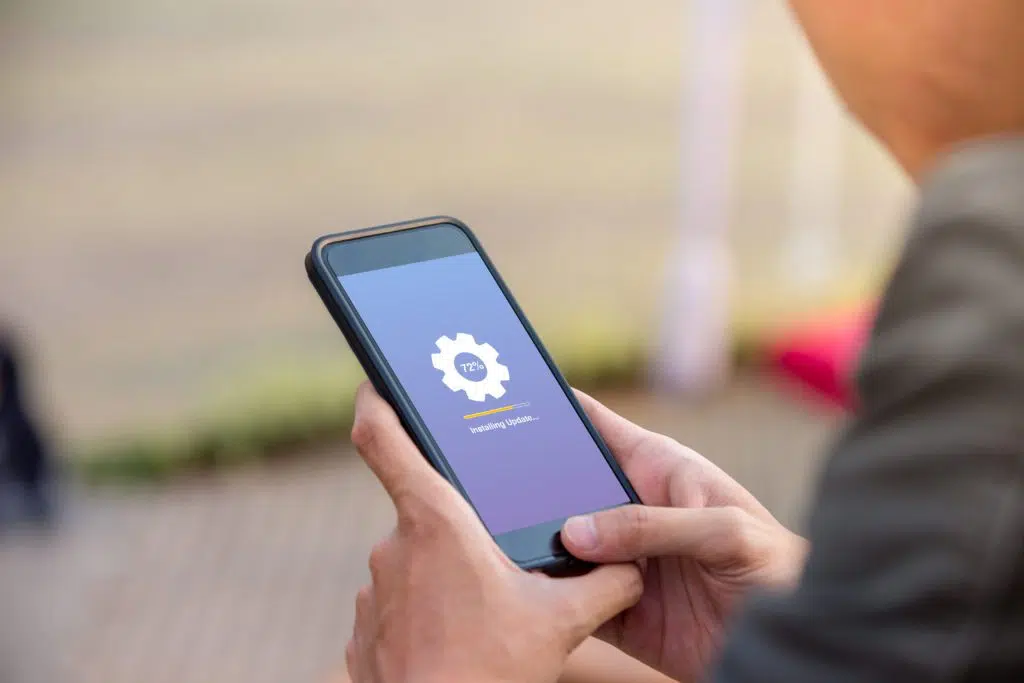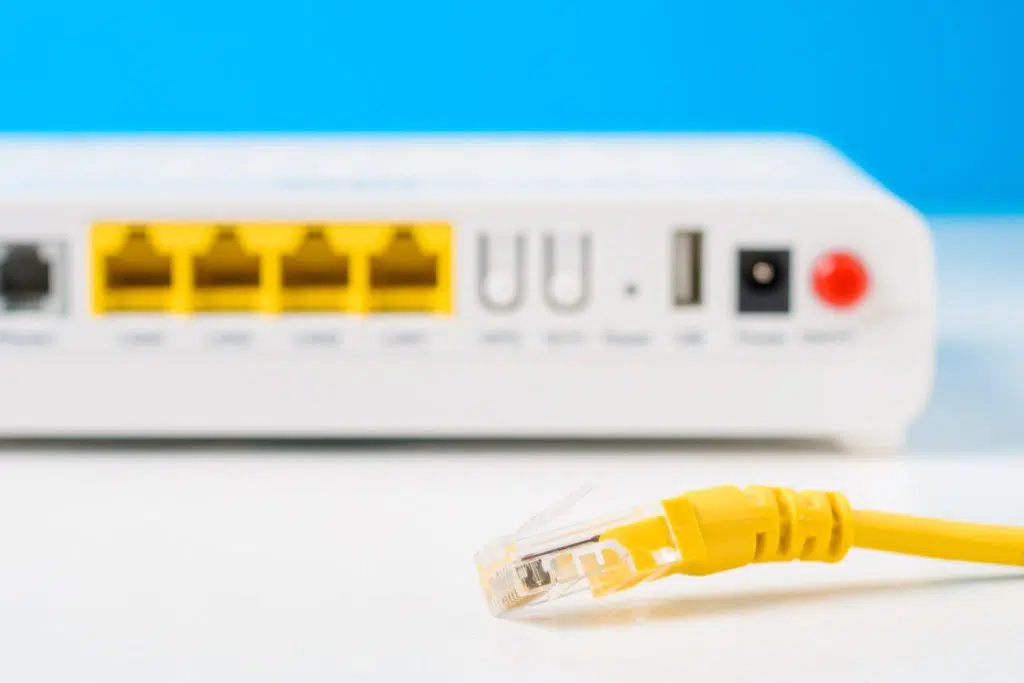This is how to fix full bars of Wi-Fi but no internet.
This happens to the best of us sometimes.
So if you want to know why you have full bars but no internet and how to fix it, then this article is for you.
Let’s get started!

Do You Have Full Bars of Wi-Fi but No Internet Connection?
Wi-Fi is everywhere, and soon it might actually be everywhere:
A satellite internet program called SpaceX won $885.5 million from the FCC to provide high-speed internet to rural communities.
On numerous occasions, it just so happens that we want to connect to the internet through Wi-Fi when we need it the most, but there is no internet.
Whether they are laptops, smartphones, iPads, etc., our devices show full bars, but when you try to send a message through messenger or use any other app, you can’t. It just says that there’s no internet access.

There’s no reason to panic or get frustrated in these situations. A fix to the problem can be a simple reset of the hardware, e.g., the device that provides internet access, smartphone, laptop, etc.
However, there might be other issues that are causing this type of problem. Let’s review some of the most common ones. But, before we do so, we need to understand how Wi-Fi works.
Let’s get right into it:
How Does Wi-Fi Work?
Think of the old radio.
How do you listen to podcasts, the news, or music over the radio in your car?
We search for a frequency of radio waves to be able to listen to the mentioned things.
This is how Wi-Fi works. It connects devices via radio frequencies. These frequencies can be different, and the speed of the connection can depend on that.
Now, radio wave frequencies in our cars are measured in MHz (megahertz), while the Wi-Fi frequency is measured in GHz (gigahertz).
Hz (Hertz) is the lowest frequency unit of measurement.
Imagine lying on the beach and watching the waves wash the shore. They come in a slow tempo, and you can clearly see these mild waves brushing up against the sand. This is what the lowest frequency kind of looks like.
The Wi-Fi frequency is more like the first set of quick ripples that you see when you throw a rock in a lake. These frequencies are higher, and they allow for faster data transmission.
Almost all smartphones have receivers and transmitters, enabling us to get these radio waves and send them when we need to.
So, why do you have full bars and no internet?
Full Bars No Internet
When this happens, it basically means that something has changed. It can either be a change in the operating systems of our devices or a change in the router itself.
The operating system is what makes our machines work the way we want them to work. It drives apps, and it provides functionality.
A smartphone without an operating system is just another ordinary phone. Even then, it needs something to make it work as an ordinary phone.
The routers, on the other hand, are something that we need to connect to the internet. When speaking about Wi-Fi, we need a wireless router.
Let’s discuss changes that can happen to the operating system on your device or the router.
Updates, No Wi-Fi
As a smartphone is released on the market, it comes with its operating system that may or may not have glitches.
When we, the consumers, buy the smartphone, we start providing feedback about what’s good and what doesn’t work so well.
That’s when the operating systems start getting updated from time to time. Also, they get updated to support the new software (applications) versions that are developed daily.

When this happens, a lot of things change on your device. One of the main things that can change is the network settings. This can affect the internet connection, and you’d be able to see full bars, but you’d have no internet connection.
The second thing that may happen is that your router might be updated. Believe it or not, some protocols are updated from time to time on every device. When the router gets updated, the same thing could happen.
IP Address Please Don’t Change
The IP (internet protocol) address is a unique number dedicated to a device on a network. It is used to identify the device through the connection.
There are two types of IP addresses:
- Dynamic IP: it constantly changes.
- Static IP: it doesn’t change.
The IP address is numerical with dots in between, e.g., 192.168.0.1.
Why is this so important?
With a static IP address, your address doesn’t change at all. It costs extra money, but it is good for businesses that host their own websites. Because the clients would easily connect to the server through the static IP.
Dynamic IP addresses are more efficient in homes and are used by ISPs (Internet Service Providers).
ISPs benefit from these because they use them to provide better services for all clients. They rent the address from you at no cost.
The benefit of these is that they come at no additional cost. They are reliable, and it’s more difficult to get to your location.
So, a change in the IP address can also affect your internet connection.
How to Fix Full Bars With No Internet Connection?
Now that you know what’s causing it, it will be easier to fix the Wi-Fi problem. We can all agree that Wi-Fi is a very important part of our daily routine.
As always, when something is not working properly, plug and unplug is usually the first solution to try. It restarts all the settings, and if this fixes the problem, it means that there was just an issue in the connection.
Be aware you might need to restart your device. The issue can be in your laptop or smartphone, due to the changes, but this also fixes the problem in most cases.
The second thing to do is a long restart. This means that you’d need to restart your router and modem. To do a long one, you need to unplug them and wait for 10 minutes before you plug them back in.

The reason for this is because the IP address that the router dedicated to your device might have changed. That’s why you might have full bars but no internet connection.
When you restart it like that, you get assigned a new IP address, let’s say a fresh one which should work absolutely fine.
Another reason why Wi-Fi bars are full but there’s no internet connection may be MAC (media access control) address filtering is turned on.
MAC filtering is a security method where each network card has a MAC address. Access to the network can be determined through this address.
It’s like a bouncer in a nightclub. When you have the ticket, you can enter. When you don’t have one, better luck next time.
When you find yourself in a company building with a “full bars, no internet” situation, it’s probably the MAC address filtering. In this case, the only thing you can do is ask for your address to be added to the list of approved addresses.
Of course, there are other reasons you might be in this situation.
Wi-Fi Password Change
There’s been a change in the Wi-Fi password, and you’re using the incorrect one, or you’ve put it in incorrectly. This can happen from time to time.
The only thing to do in this case is to simply put in the Wi-Fi password again. If you connected to this network before, an old password in your device doesn’t work anymore.
There’s another common mistake made by almost everyone at least once in their lifetime.
Connected to the wrong wireless network
We can simply connect to the wrong wireless network. It can often happen as we tend to connect to a lot of networks during the day.
You take a train, you connect to the Wi-Fi. You go to a bar, you connect to the Wi-Fi. You visit a public park, you connect to the Wi-Fi if possible.
Sometimes, when we go nearby the place where we connected previously, our device picks up the Wi-Fi signal and tries to connect to the wrong network.
A simple check in your Wi-Fi settings will let you verify if you’re connecting to the right network.
Wi-Fi adapter issues
Sometimes, the Wi-Fi problem we’re having is related to the Wi-Fi adapter we have in our devices. It’s no biggie. You can handle it with no sweat.
You’ll need to restart the Wi-Fi adapter in your internet and sharing center. It will most likely be updated when you restart it.
You’ll need to go to the control panel, and you can simply type in “internet and sharing center.” Select the network you are connected to, right-click, “disable,” and “enable.” It should resolve the problem.
Wi-Fi Weak Signal
If you’re experiencing a problem with a weak Wi-Fi signal, but you do have an internet connection, that’s another thing.
As we said, Wi-Fi is shared through radio wave frequencies. Some of them provide stronger connections, some of them provide weaker connections.
When there’s a higher frequency, the signal has difficulty passing through solid objects, especially walls. That’s why in the other corner of your home, you might not get the same amount of bars as somewhere else.
If you’re outside and not getting a signal, it might be because your router simply doesn’t have enough range.
For this, you’ll need to get a range extender to fix the issue. It will extend the range of the radio waves, and you can surf the internet all you want in your backyard.
The last thing you can do when experiencing a “full bars, no internet” problem is to call the tech support of your ISP. They will guide you through the process and usually fix the issue in no time.

